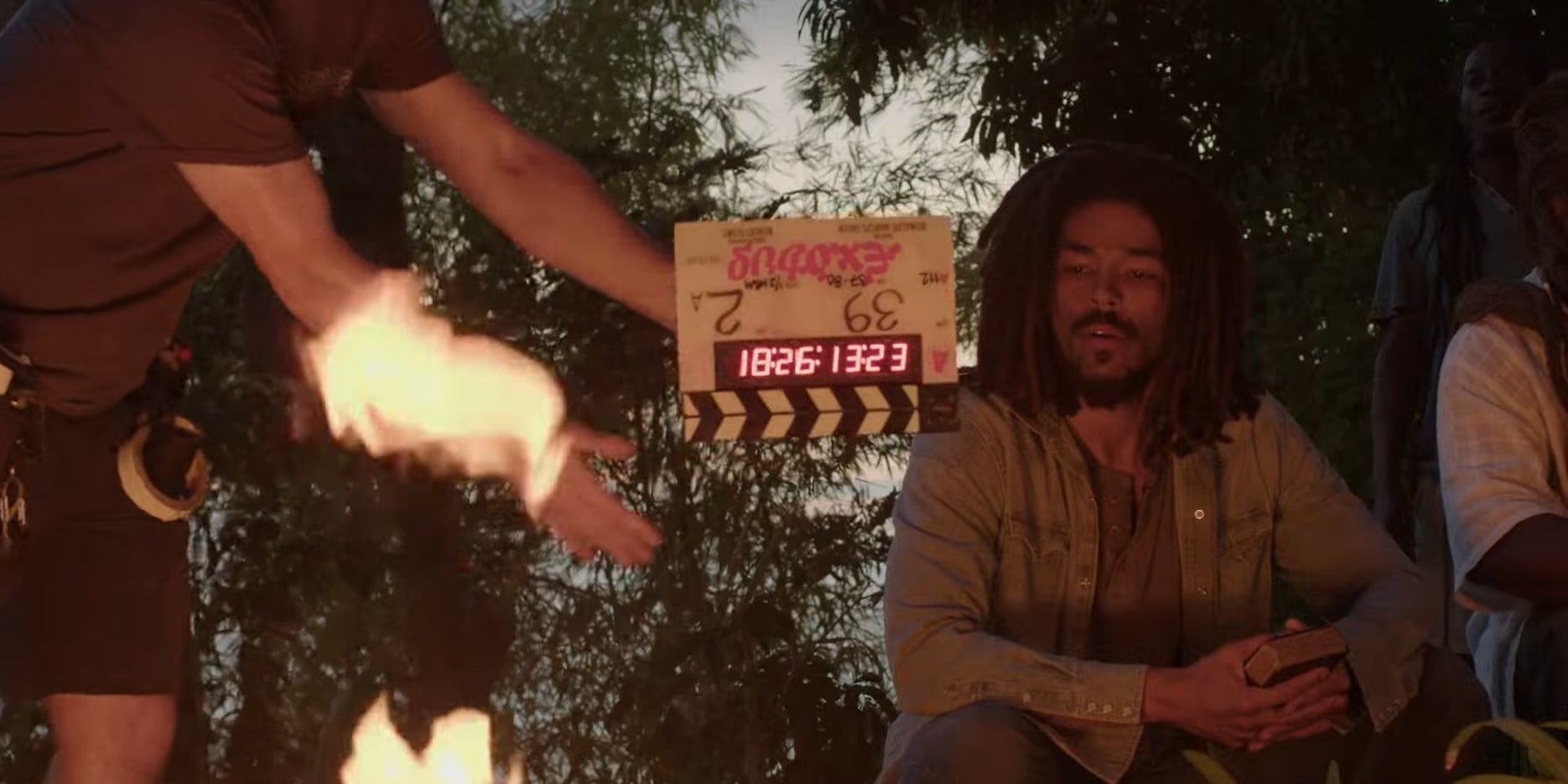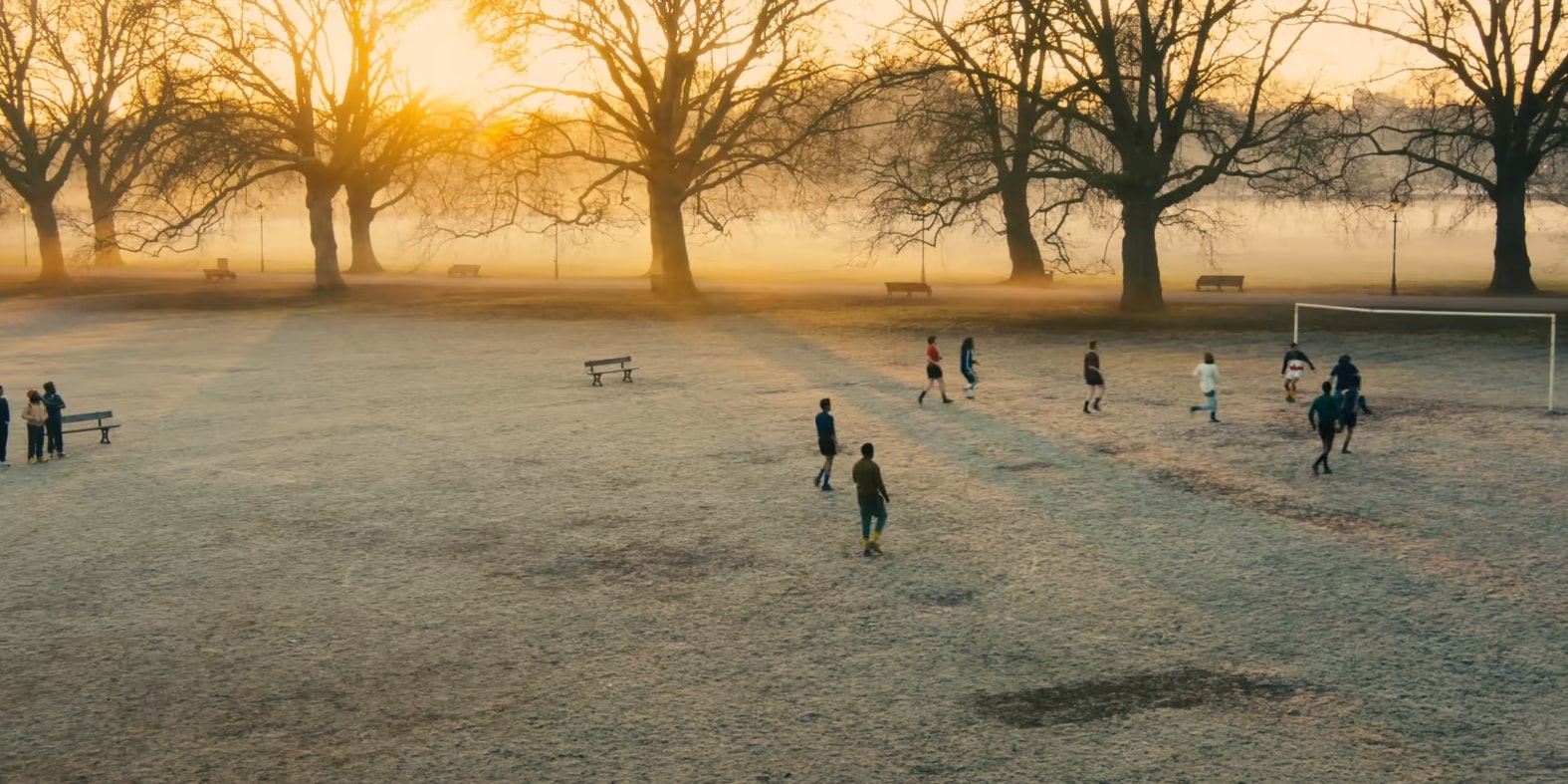‘Bob Marley: One Love,’ directed by Reinaldo Marcus Green, recounts the later life of reggae icon Bob Marley, his music, his struggles, and his message. The biopic kicks off with preparations for the Smile Jamaica concert, intended to foster peace between the warring factions of the nation, but is interrupted by an assassination attempt at Marley’s home. The singer exiles himself to England, working with The Wailers on Exodus and performing in local venues. They play football, gain recognition, and prosper in the city. However, Marley is diagnosed with cancer, and he takes it upon himself to deliver a message that was left incomplete.
Returning to Jamaica in 1978, he performs the One Love concert, becoming a messenger of unity, love, and peace for Jamaica and the world. The film primarily takes us through Marley’s life in Jamaica and London, building a nostalgic atmosphere around the locales visited by the musician. With a convincing recreation of the singer’s journey, the movie sparks curiosity regarding its filming sites, and whether they accurately reflect real accounts.
Bob Marley: One Love Shooting Locations
True to the legendary musician’s journey, ‘Bob Marley: One Love’ was shot at authentic sites across Kingston and London, in Jamaica and England, respectively. Principal photography began on December 5, 2022, and was wrapped by April 28, 2023. Bob Marley’s son, Ziggy Marley, worked closely with the film crew and was present on set every day to ensure the film delivers a faithful portrayal of his father. Let us take a closer look at the shooting locations chosen to recreate the reggae icon’s journey.
Kingston, Jamaica
The capital city of Jamaica houses the birthplace of Bob Marley, Trench Town, which became a major filming location for the biopic. Located just northwest of downtown Kingston, Trench Town is considered the birthplace of rocksteady and reggae music and was known as the Hollywood of Jamaica in the 1960s. Director Reinaldo Marcus Green had previously worked in the region and already knew the local crew. Their filming process was further expedited by support from the local community and the president of Jamaica. “Going back to Jamaica was a homecoming for me… I knew the crew, the security staff, the drivers. There was a kinship and I felt honoured to shoot in Jamaica.” said director Green in an interview.

Many of the movie’s sequences were shot in the Strawberry Hill resort northeast of Kingston. The location played a significant role in Bob Marley’s life, its lush hilly surroundings and exquisite cottages serving as an idyllic retreat. The property’s pristine wood-paneled structure became a set for multiple scenes in the film, providing safe haven after the attack on Marley’s house. Other scenes of the streets of Kingston, including where he recorded, were shot along Hope Road in the heart of the city. The Jamaican concerts seen in the movie, were shot in Kingston as well.
When it came to lensing scenes of Bob Marley’s house, the filmmakers chose not to make use of the historical property owing to its status as a museum, and due to its surroundings having changed considerably since the 1970s. Instead, the production team made a replica of the house, perfectly mirroring the real property in its early days. It was put together by local crews and gave more access for filming. However, the Caribbean weather presented a major challenge, which was also seen as an opportunity. “It’s 110 degrees in the shade! It’s hot, sweaty, it’s all the elements but I embraced them — it makes it real; it makes it raw. We don’t have to spray sweat on you, it’s real and that’s what makes the film feel raw and authentic and less staged,” said director Green in the aforementioned interview.
London, England
The filmmakers began principal photography in London, tracing Marely’s steps and recounting his life in the city, from the places he lived in, to the football field he played in. Marley and The Wailers settled in the house at 42 Oakley Street, Chelsea, where they completed the song “Exodus.” The house and its surroundings are featured in the film in addition to the landmark of Nelson’s column in Trafalgar Square. When Marley is shown to arrive in Paris, the backdrop is actually from One Great George Street in central London. The musician loved to play football, saying it made his world come alive. While in London, he and his crew would often exercise and play at the Battersea Park in southwest London. The movie’s scenes of the same are faithfully depicted at the exact location.

Read More: Best Historical Movies on Netflix


You must be logged in to post a comment.